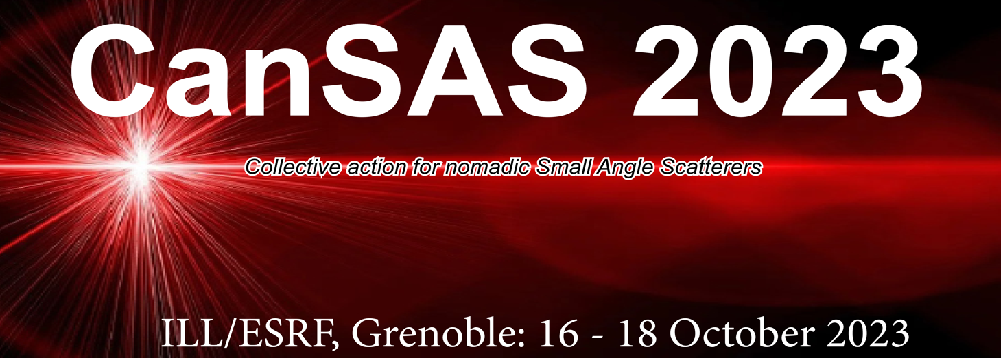Speaker
Description
To increase the information content of small-angle scattering data, it is usual to perform contrast variation small-angle neutron scattering (SANS) with one or more of the components deuterated and by varying the composition of the solvent using mixtures of per-deuterated and non-deuterated solvents. Additional information can be added by combination with small-angle X-ray scattering (SAXS) data as the contrast conditions are often quite different from those of SANS. When subsequently modelling the data using least-squares methods, the information content of the combined data sets is best exploited, when the data are fitted simultaneously by the same structural model, where only the contrast of the components are varied and taken to be that, which can be calculated for the particular data set.
To obtain satisfactory agreement of a model with the combination of several data sets requires that the data sets are consistent, and this can be quite difficult to check independently. Even considering only measurements at a single contrast in SANS, the consistency has to be considered as the data are often measured at different instrumental setting, i.e. at different wavelengths, collimations and sample-detector distances, giving rise to different instrumental smearing for the various settings.
Instead of simply merging the data, which may lead to systematic errors in the merged data set, the resolution function of the individual settings has to be included in the data analysis. Since the data sets are often converted to absolute scale using water scattering recorded at the same setting, there may also be small off-sets between the data sets, which needs to be corrected for.
The mismatch may originate in the difference divergence of the incoming beam as well as errors in calibrations factors for different neutron wavelengths. A correction for errors in scales can be done by performing an Indirect Fourier Transformation, where the resolution function of the individual setting is used, in combination with optimizing the weighted chi-square varying scale factors. The scaling obviously has to be done using the data set recorded at the setting for which the calibration is considered to be most reliable, as reference.
When simultaneously fitting one structural model to a contrast variation series, it is also very important to have correct determinations of contrasts. These depend critically on the values for the partial specific volume and on accurate knowledge on elemental composition of the components of the solute as well as that of the solvent. This is particular important for the contrasts of SAXS since they are calculated as difference of quite similar values of electron densities. It is sometimes not sufficient to use literature values and the contrasts have to be determined using accurate density measurements and determination of elemental composition. Also, temperature dependence of the
densities may have to be considered. Even when this is done as careful as possible, it is sometimes necessary to adjust some of the contrasts in order to obtain satisfactory fits.
The last and perhaps most obvious pitfall may be that there are isotope effects in the sample that influence the structure or phase behavior, so that the structure is not the same in the different samples. Since the electron densities, which provides the contrast for SAXS, have relatively modest dependence on isotope, the samples in a contrast variation series should be checked by SAXS to ensure that the structural state is the same in all samples.

